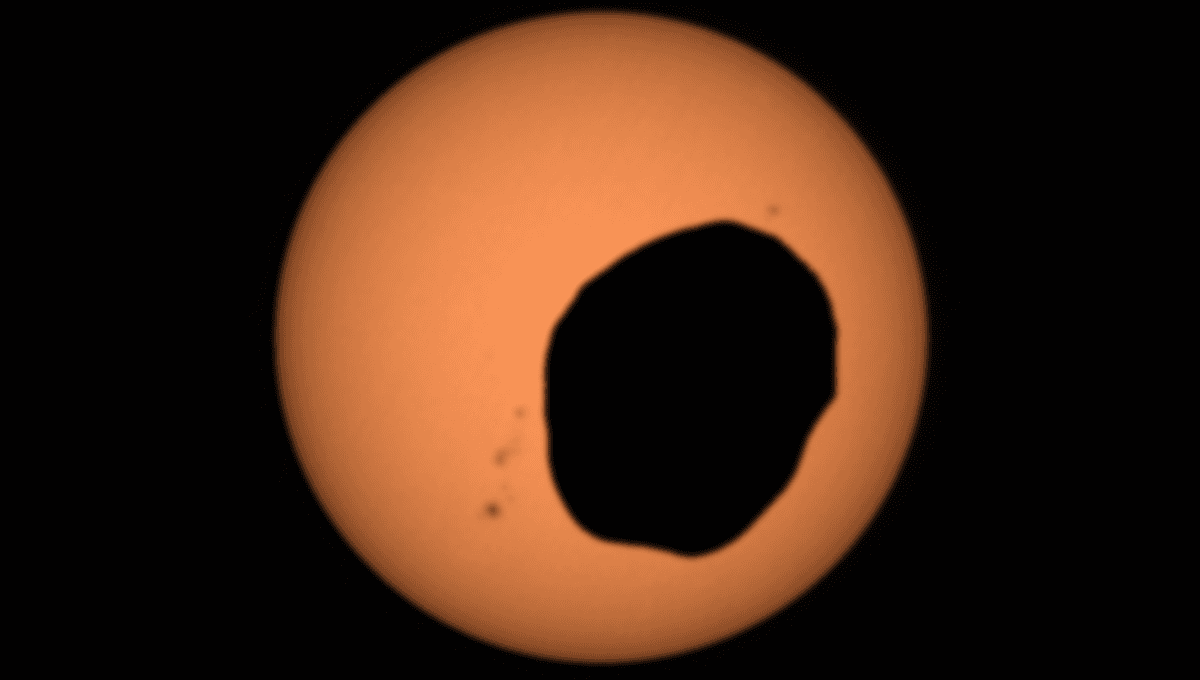
A timelapse of photos captured by NASA’s Perseverance rover shows a spectacular solar eclipse as doomed moon Phobos crosses the Sun.
Solar eclipses on Earth right now are spectacular to look at – we happen to be living at just the right moment in time to observe the Sun and the Moon appearing roughly the same size in the sky. While the Sun’s diameter is about 400 times larger than the Moon’s, it also happens to be about 400 times further away from the Earth, making them about the same size in the sky from our perspective. However, 4 billion years ago, before the Moon drifted to its current orbit, it would have appeared about three times as big as it is now in the sky – and around 600 million years from now, the Moon will drift too far to cover the Sun entirely.
Any planet or minor planet with a moon can have an eclipse, with the worst (in the Solar System, that we know of) probably occurring on Pluto. There, the Sun appears like a bright star in the sky while its largest moon, Charon, looks about four times larger than our own.
On other bodies, moons may be too small or distant to eclipse the Sun entirely, meaning they can only witness a partial eclipse. Mars, with two moons to choose from, still produces quite the spectacle. The Perseverance rover captured one such eclipse as Phobos transited the Sun on February 8, 2024.
As well as being nice to gawp at, observing them closely can tell us about Mars and its moons.
“Each time these eclipses are observed, they allow scientists to measure subtle shifts in Phobos’ orbit over time,” NASA explained after a previous eclipse in 2022. “The moon’s tidal forces pull on the deep interior crust and mantle of the Red Planet; studying how much Phobos shifts over time reveals something about how resistant the crust and mantle are, and thus what kinds of materials they’re made of.”
We now know that Phobos – the closest of Mars’ two moons – is set to get ever closer to the planet, before crashing into Mars in 50 million years or breaking into a ring, while Deimos will drift ever outwards until it leaves Mars’ orbit.
Source Link: Perseverance Captures Doomed Moon Phobos Partially Eclipsing The Sun On Mars